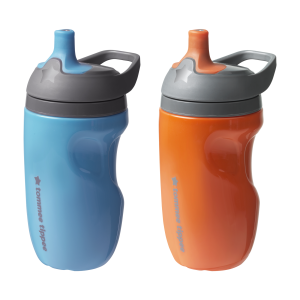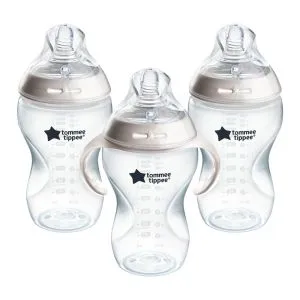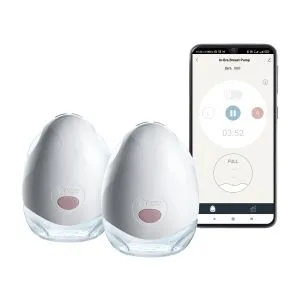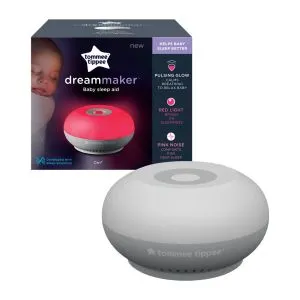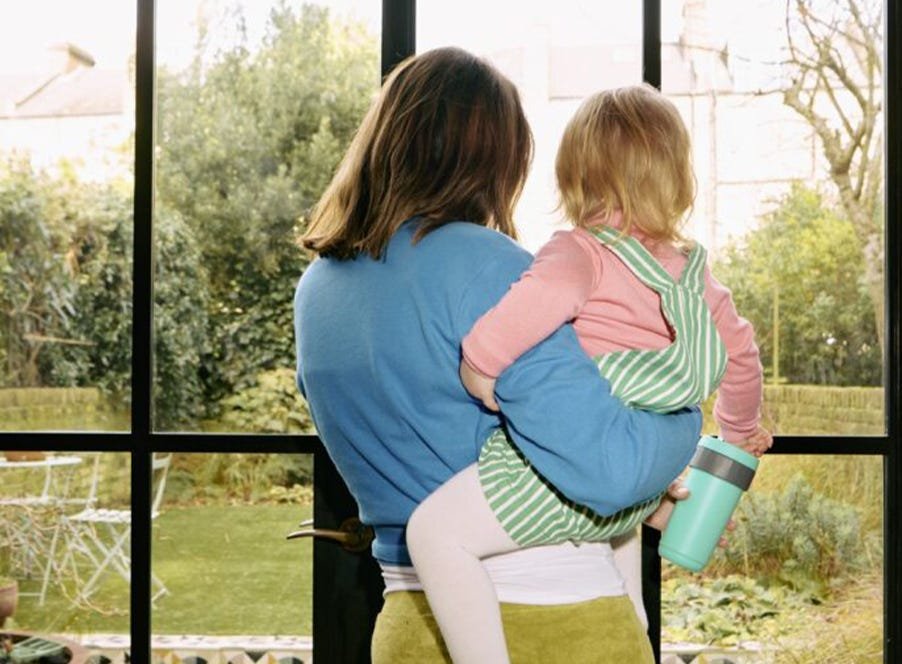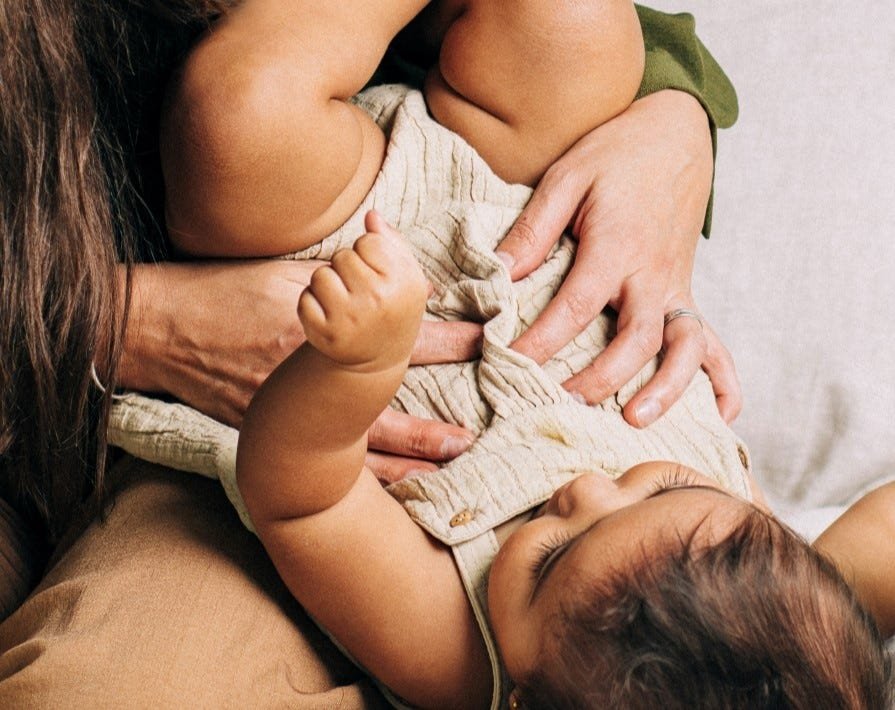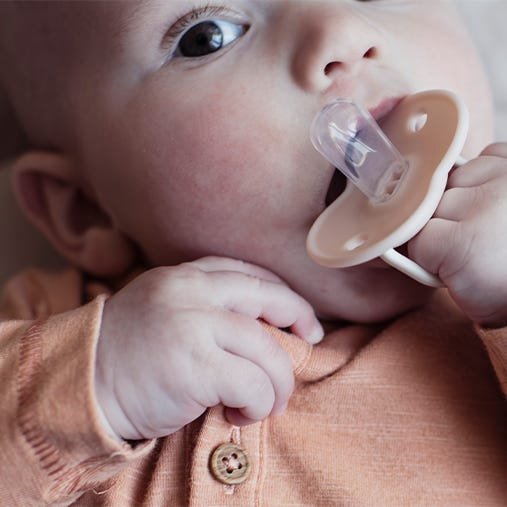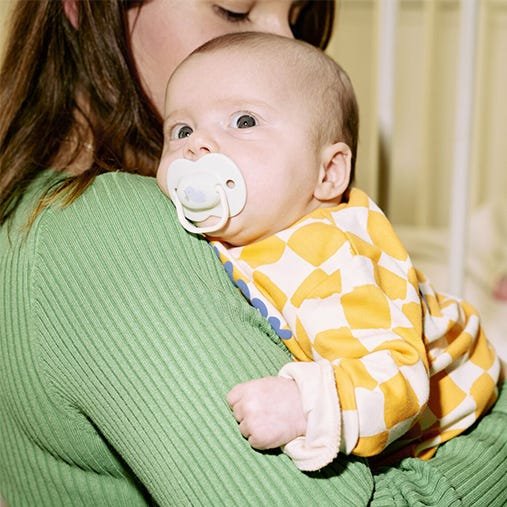Weaning
Silicone baby bibs
When you begin your weaning journey, silicone bibs can be really handy. They're easy to clean without the need for the washing machine, and they're durable, too. So they can be handed down or passed on from one little one to the next.
Bamboo tableware
In the past, plastic has been the go-to material for brands who make baby tableware. But other, more eco-friendly options are now available, such as bamboo.
Bamboo (unlike plastic) is biodegradable and doesn't contain any of the toxins and chemicals used to make some kinds of plastic. It's also very durable, and a natural, renewable resource - no fossil fuels required!
Puree your own fruit and veg
Making your own baby food using a blender means less single use plastic packaging to deal with. Most supermarket-bought baby food now comes in plastic pouches that can be difficult to recycle, rather than the old school mini glass jars.
This is also a great step to take because...
- When it comes to homemade baby food, you can serve up nutritious and delicious meals and broaden your baby's taste palate by experimenting and pureeing whichever fruits or vegetables you like!
- Making your own baby food is generally cheaper, particularly is you buy and cook the in bulk and the stored in the freezer.
- When making homemade food, you don't have to wonder how long it was sat on the supermarket shelf. Plus, it tastes fresh, and you know exactly what your baby is eating.
If you have some outdoor space at home and are feeling green fingered, you could try growing some veggies yourself!
Bath & Changetime
Reusable Diapers
If you're concerned about the environmental impact of your child's diapers, reusable ones might be a good option for you...
- While making the swap to reusable diapers is a great, eco-friendly option, it can be an expensive one. Instead of buying them brand new, there is a large market of perfectly usable second-hand options available.
- When purchasing reusable diapers, look for ones that're made using plant-based materials like cotton, bamboo, and hemp, and avoid diapers that're made using synthetic fibres because they can shed microplastics and contribute to pollution. Non-organic cotton should also be avoided because it requires fertilisers, pesticides, and lots of water to grow.
- Try to air-dry your reusable diapers once you've washed them, rather than using a tumble dryer.
- If you plan on having more babies in the future, reusable diapers are great because they can be stored away and used again.
Baby Wipes
Never flush baby wipes down the toilet and try to use water-based biodegradable wipes.
If you want a reusable option, using cloth wipes is a brilliant alternative to disposable baby wipes. They can be used, washed and used again.
Baby Toiletries
When buying toiletries and skincare products for your baby, try to look out for options with all-natural ingredients and 100% recyclable packaging.
Toys
Get crafting
Before you pop your tin cans, egg boxes, and plastic yoghurt pots into the recycling bin, why not have some fun with them first. The Green Parent has loads of tips on how you and your little one can get crafty with packaging.
Wooden toys
Baby and toddler toys made from wood are certainly making a comeback and they're a great alternative to plastic. Not only are they better for the planet but they also look great and are hard-wearing. They're easy to repair using wood glue if they break and can be passed from one generation to the next for years to come.
Most wooden toys are finished with vibrantly coloured water-based dyes, stains, oils, and waxes that're totally baby-safe. Look out for wooden toys that are The Forest Stewardship Council (FSC) approved, this means that the wood they're made from is sourced from well-managed forests.
Buy second-hand toys
Basically, the longer toys are used, the better it is for the planet, and it can really pay off to look around places like car boot sales and charity shops when buying toys.
Not only will you save money and give a pre-loved toy a new life, but it can be fun! Think of it like a treasure hunt and get your little one involved. Try looking online on sites like Gumtree, Facebook Marketplace, and Freecycle, too!
With sites like Whirli, you can subscribe to a plan and get tokens to spend on toys from a huge library. Then the toys are yours to play with for as long as you want. Simply keep toys as long as they are still being loved at home. When your little one is done playing, you send the toys back and swap them for something different.
Second-hand toys may not be brand new, but they'll still be new and super exciting to you little one!
Clothes
Choose organic fibres when buying baby clothes
This one is important, especially for babies that have sensitive skin. Not only are there so many environmental benefits to using organic cotton (it isn't grown using fertilisers and pesticides), but organic cotton is also considerably softer on delicate skin than non-organic.
Plus, even though they may cost more initially, organic cotton garments last a lot longer than standard cotton, helping you a few pennies in the long run if you want to use the clothes again for another baby in the future.
Buy second-hand baby clothes
It's common knowledge that little one's grow out of their clothes at record speed and buying brand-new pieces for each age stage can get pricey! That's why buying second-hand clothes from other parents, thrift stores and sites like Depop, Vinted and Dotte is so good. It saves perfectly good clothing from going into landfill and is kind to your purse too!
Once your baby has outgrown some of their clothes, start the cycle again and donate them to charity shops or sell them to other parents to get some cash for a mini wardrobe refresh.
If you have pieces that you particularly love or that have sentimental value and you plan on having another little one in the future, box them up and keep them!
Washing baby clothes
You should always wash baby clothes (whether store-bought or second hand) before your little one wears them for the first time. When you do wash your little one's clothes, follow these steps to save energy and a little cash...
- Try to buy clothes of a similar colour and material so that you can easily put items all in together and save mountains of time by reducing the number of separate washes you need to do.
- If you can, try and invest in an eco-friendly, non-biological detergent. These are designed especially for sensitive skin and come free of dye, colouring or perfumes.
- Wash at 86/104°F. This is certainly hot enough to get rid of any stains or dirt in clothes, without costing you and the environment too much! The only exception here is when your little one is ill or a garment is heavily soiled, a higher temperature could be beneficial to blast any tougher germs.
- Try to air-dry your laundry rather than using a tumble dryer.
Recycle old clothes that're damaged
For any outgrown clothes that are too damaged to sell or donate, make sure that instead of binning them and having them end up in landfill, you recycle them.
Most recycling plants have a drop-off point for old clothes, shoes, and other items, and some shops have schemes where you can drop off old clothes to be recycled in exchange for vouchers.
Recycling
Try to teach your little one about recycling from an early age and help them to know which waste goes into which bin. Explain this to them in simple terms "if we put this glass jar into the recycling bin, it will be made into a brand new one, again and again!".
It's a great idea to check what your local recycling centre can recycle.
